
03 9457 4755













Chronometric
chronometric
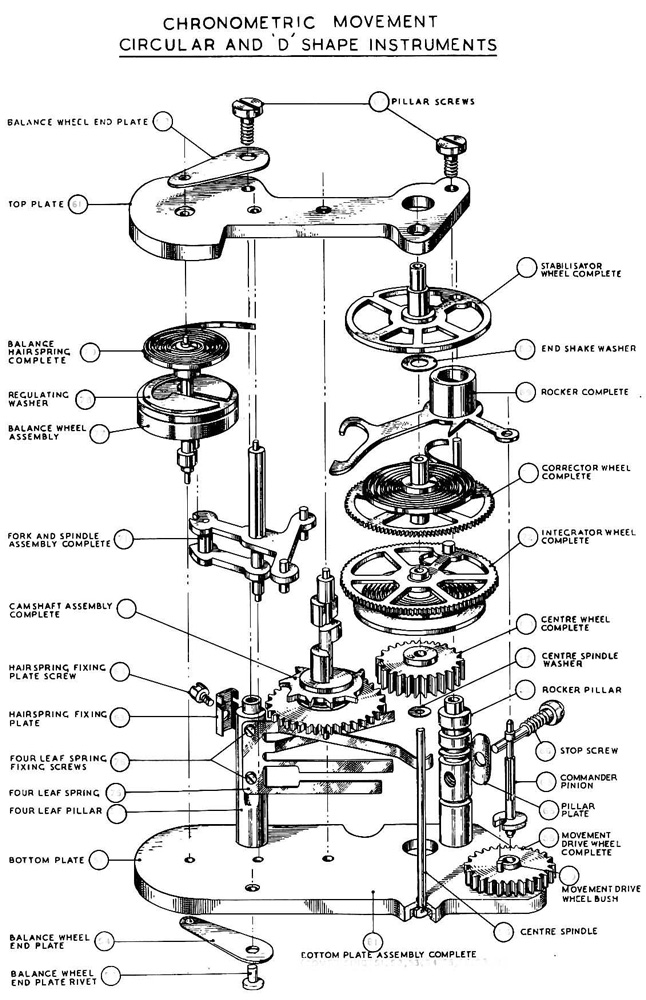
We restore all chronometric speedometer's and tachometer's including maximum hand models.
![]()
ANGLE DRIVES

Angle Drives to alter ratio and direction are an integral part of any chronometric installation.
MOREcables

We manufacture any speedometer and tachometer cables to sample or specification. We make some throttle cables and have push-pull cables manufactured to sample or specification.
Moreautomotive chrono's
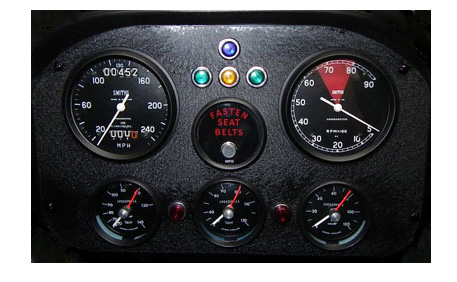
Rodger uses Chronometric instruments in his Marcos. Let us help you install some in your car.
More
![]()
CHRONOMETRIC 250MPH
.jpg)
This speedo was installed in the XJ13 Jaguar Protoype in 1966.Jaguar hoped to win at Lemans but unfortunately the car did not get the opportunity to explore the limits of this unusual scale which normally only extends to 150mph!
CHRONOELECTRIC
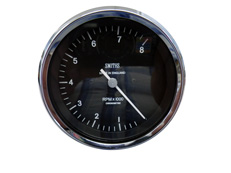
For those of you that cannot apply an original chronometric to your application these Chronoelectric Tachometers offer an affordable alternative with maximum recall option available in 8, 10 or 12000rpm.
dials

We screen print traditional flood lit dials and modern back lit dials.We can print in all colours and finishes including metallic and fluorescents.Our dial library is always increasing.We will design artwork from scratch or modify existing artwork.
More
![]()
BMW VDO CHRONOMETRIC
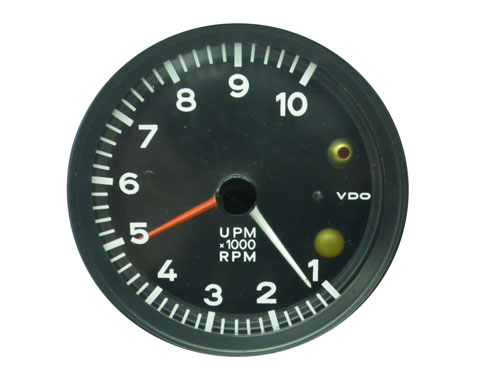
This is a very rare instrument. A VDO Tacho with a Smiths Chronometric movement. They appeared primarily in Factory Porsche and BMW racers.
MOREBMW VDO CHRONOMETRIC
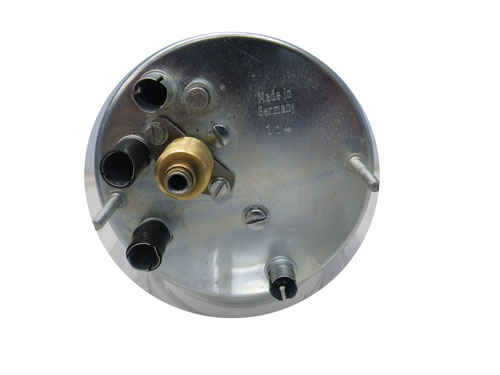
We are making similar tachometers to the one we have restored for a series of 906 Porsche Replica's being made.
MORE
![]()
LEA FRANCIS
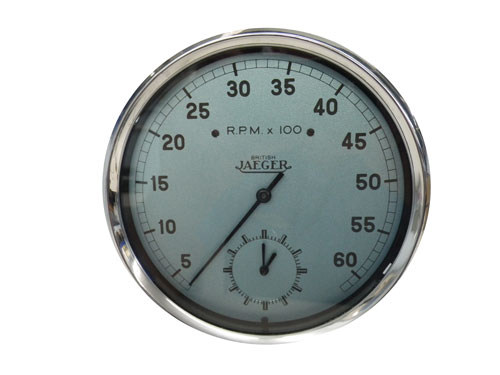
We restored a set of this instruments which are not unlike those in a MG TC or a Singer Le Mans except for the colour and graduations..
MORE

The Chronometric speedometer is a principle commenced by the Jaeger speedometer company in Paris, France, in the 1920s and as such is a METRIC instrument, that is the dimensions, screws, threads etc. are metric and not imperial as generally thought.
For example on the motorcycle instrument, considered to be 3” dia., with a 26tpi thread, the bezel is 80mm dia. x 0.9mm thread. Sometime in the late 1920's, Jaeger Paris set up a company in England, Jaeger Ed., with two British directors and one French director. Around 1927, Smiths Motor Accessories purchased this company and re-named it British Jaeger.
For a long time the dial faces, either with the British Jaeger or Smiths logo on them also had a credit to Jaeger …”Jaeger patent”. Smith’s often badged their instruments Jaeger or Smiths.
The movement of a chronometric speedometer is strictly an integrating mechanism, the controlling factor being the time base, a conventional ‑ or near conventional-escapement unit as used in every watch and clock mechanism. In this instrument there is no free movement of the pointer since at any instant it is, either rigidly locked in a given position or geared direct to the driving, cable. The escapement is mounted on the left hand side of the movement. The escape wheel is mounted rigidly to a small camshaft and is driven through a spring loaded clutch between it and the driving gear at the base of the shaft. This gear is directly coupled to the speedometer driving cable, and provides the motive power to maintain the oscillations of the escapement. The speed of the camshaft is, of course, maintained at a constant figure according to the timing of the escapement. The clutch is caused to slip when the driving speed exceeds this figure. Next to the camshaft the main wheel assembly is seen. This consists of the three wheels known respectively as the integrator (at the bottom), the recorder wheel (in the centre), and the stabiliser (at the top).
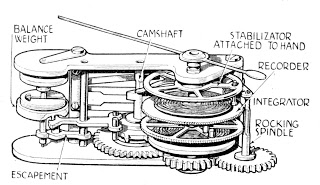
To the last named the pointer is attached. All the wheels are loose on the spindle and free to rotate independently of each other. The recorder wheel is driven, in one direction only, by the integrator wheel through the medium of two pins. The recorder wheel in turn drives the stabiliser and pointer, through the medium of a single pin, but this time the drive is in both directions. The integrator and recorder wheels both have toothed edges on which leaf springs as anon‑return device. .When as will be explained later. The leaf springs are lifted; a robust hair spring causes the wheels to spring back to their starting position. On the extreme right of the movement is a gear, permanently engaged with the driving member and mounted on a shaft, in the shank of which teeth are cut forming a very small position.
The top bearing for this shaft is formed in the extreme end of a rocking lever, the movement of which causes the pinion to engage with the edge of the integrator wheel. On the Camshaft are three small cams controlling the rocking lever, and the two leaf springs for the integrator and recording wheels.
The sequence of operations is as following.
1. The top cam on the camshaft moves the rocking lever, causing engagement between the pinion & integrator wheel for a fixed period of time. In that time the wheel will turn through a definite angle proportional to the speed of the driving flex, carrying with it the recorder wheel and stabilisator wheels and of course the pointer.
2. The middle cam raises the leaf spring controlling the recorder wheel. On this occasion no movement will take place.
3. The lower cam raises the leaf spring controlling the integrator wheel, allowing it to return to its starting point but leaving the recorder and stabilisator wheels in their new position.
4. The sequence in repeated but at this point the speed of the vehicle may have dropped. In this case the integrator wheel will not reach its original position. Hence on the second operation of the sequence, when the recorder wheel isnt released it will fall back to the new position of the integrator wheel taking with it the stabiliser wheel and pointer. On the other hand the speed may have increased. If this is so the deflection of the integrator wheel will be greater and it will therefore pick up the recorder wheel etc., and carry it to its new position. Each sequence takes 0.6 seconds whilst the actual time of engagement of the pinion is 0.3 seconds.
To ensure the accuracy of recording, certain refinements are necessary. The integrating wheel has mounted below it, and coupled to it by a friction spring, what is in effect a small flywheel. This section of the wheel is to prevent any bounce which may occur when the integrating wheel is returned to its zero stop, Bounce would of course result in a false zero, any such error being cumulative upon the next reading.
The second important point is the connection with the escape wheel and camshaft. The movement of this wheel is naturally not continuous and uniform; it is in fact in a series of jerks.
It is possible, therefore, to reach a position of indefinite engagement between the pinion and integrator wheel both at the point of engagement and disengagement. To overcome this two teeth are omitted from the escape wheel thus ensuring positive engagement between the two.
The stabilizer wheel has two functions. The first and lesser of these is to ensure an accurate zero position of the pointer.
In the edge of the wheel a niche is cut, into which a small V shaped spring falls when the pointer returns to zero. In its more important function it is in effect an averaging device. There are 135 useful teeth on the edge of the integrator and recorder wheels, a factor which limits the accuracy to one part in 135 as far as the two wheels are concerned. Quite obviously, for a given speed the final position of the recorder wheel will vary on each cycle dependant on the exact point of engagement between the pinion and integrator wheel, and between the recorder wheel and its retaining spring. By careful choice of the size of the hole in the stabilizer, in relation to the size of the driving pin in the recorder wheel, these variations average out.
The mileage recorder is a separate part of the instrument and not involved with the speed registration.
It forms a robust and compact unit capable of withstanding the severe vibration met with on motorcycles. The system employed gives high torque, thus permitting generous proportions for parts such as pivots etc., usually so fragile in nature.
The scale of the instrument is of course linear, and it is virtually independent of temperature errors.
There is a certain minimum figure for accurate recording i.e. the figure at which the clutch commences to slip and at which the camshaft is driven at its proper speed.
This figure is very low – is in fact less than 5% of full scale, but it does make it impossible to start at a true zero.
Information supplied to Dennis Quinlan, as a leaflet, from Smiths Industries in London during 1970s.
prE war application listing
Truck Gauges
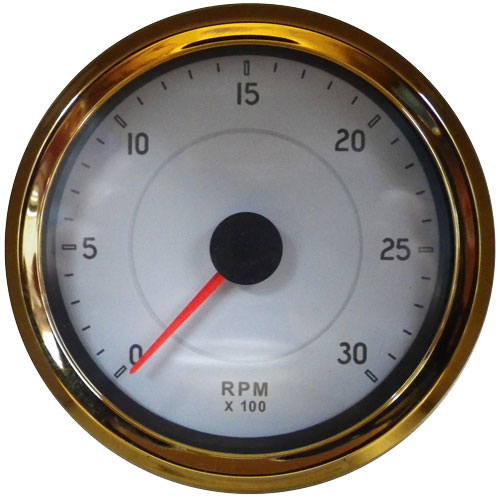
We now have a complete set of truck gauges available in Cobra and HIWHITE styling.
Porsche Metric Dial
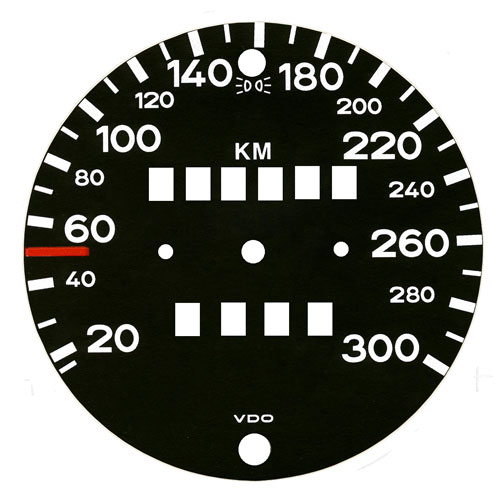 We now have metric dials and odometer gears for most Porsche Speedo's up to the late 1980's.
We now have metric dials and odometer gears for most Porsche Speedo's up to the late 1980's.
Tacho Upgrades
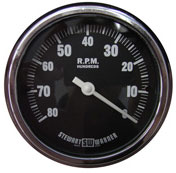
Changed your 60-70's car to electronic ignition?
We can help make your tacho work again.

 View Cart
View Cart
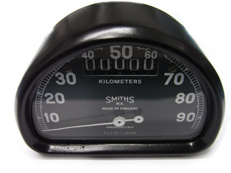
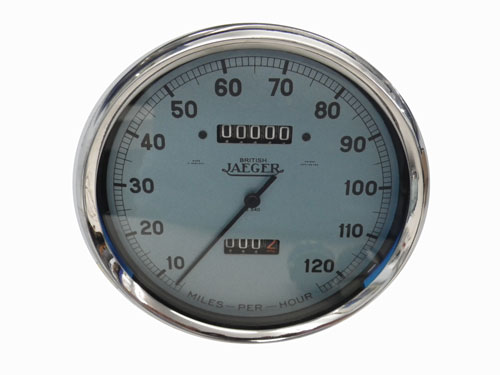
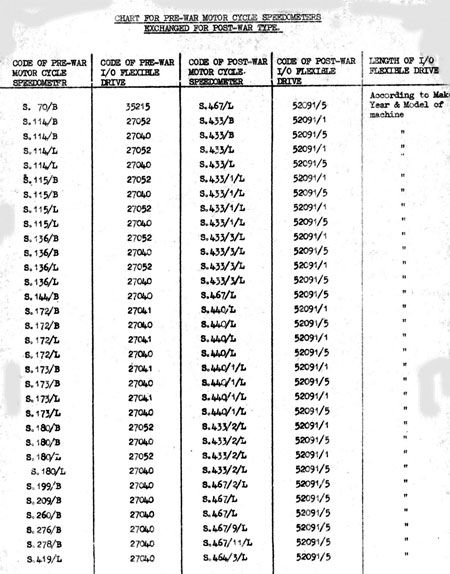

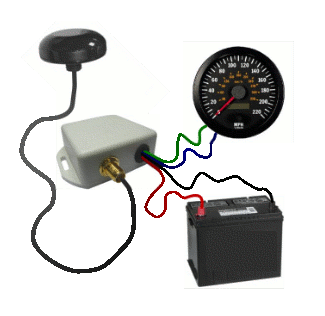
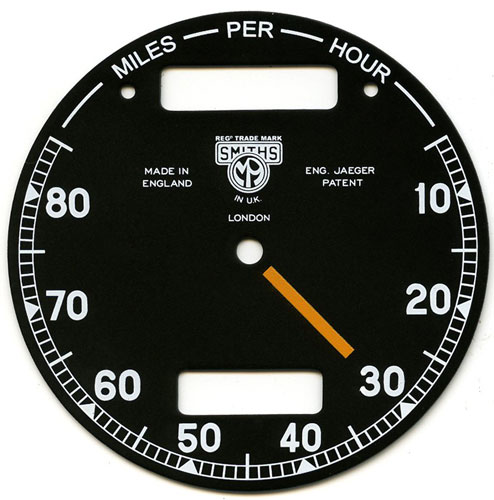 Chronometric Dials.
Chronometric Dials..gif)
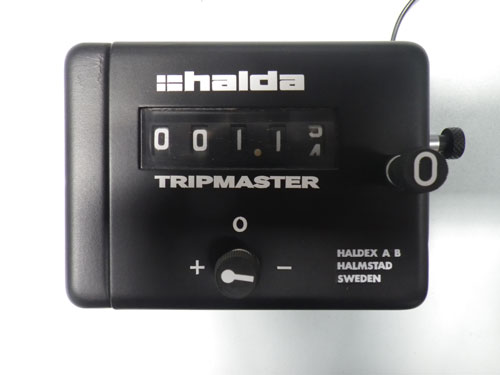
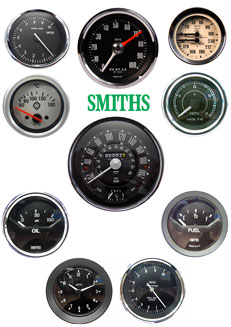
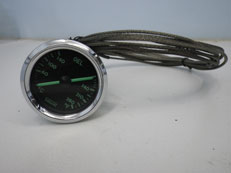
.jpg)